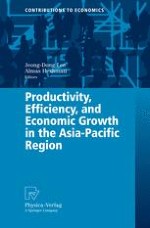2009 | OriginalPaper | Chapter
Concentration, Profitability and (In)Efficiency in Large Scale Firms
Authors : H. Dudu, Y. Kiliçaslan
Published in: Productivity, Efficiency, and Economic Growth in the Asia-Pacific Region
Publisher: Physica-Verlag HD
Activate our intelligent search to find suitable subject content or patents.
Select sections of text to find matching patents with Artificial Intelligence. powered by
Select sections of text to find additional relevant content using AI-assisted search. powered by
The relationship between efficiency and market structure has been under investigation in the literature for a long time. According to Hicks (1935), firms with higher market power can survive in the economy even if they have higher costs since they can charge prices above the marginal cost. Although the relationship between firm performance measured by profits and market structure is obvious (Peltzman 1977), the direction of causality remains ambiguous (Clarke et al. 1984). There are different explanations of this relationship. One is to start with market power and relate the higher firm efficiency to the ability of firms with higher market power to charge prices above the cost margin. The second one, originally developed by Demsetz (1973), is based on the efficient structure of production and relates higher market power to the higher profits brought about by higher efficiencies. Although these two approaches try to explain the same relationship from the firm side, the welfare implications would be completely different. The reason for this is that in the first approach, that is, the market share hypothesis, firm performance (efficiency) is measured by the profitability of a firm and the relationship with market structure examined. According to this hypothesis, market power and efficiency are either negatively related, or not related. In the second approach, firm performance is measured by the efficiency of production. According to efficiency hypothesis, market power and efficiency are positively related. Feeny and Rogers (1999), Choi and Weiss (2005), Oustapassidis et al. (2000) and Bhattacharya and Bloch (1997) test both hypotheses for different countries and sectors and report controversial results. Thus, there is no clear evidence supporting any of the two hypotheses.
The paper is organized as follows: The next section gives a brief survey of Stochastic Frontier Analysis and presents the specification of the Stochastic Frontier Analysis used as the method of estimation in the paper. The data and variables used in the econometric analysis are introduced in the Section 2.3. Section 2.4 presents the estimation results and discusses their interpretations. Section 2.5 of the paper summarizes the conclusion of the study.
